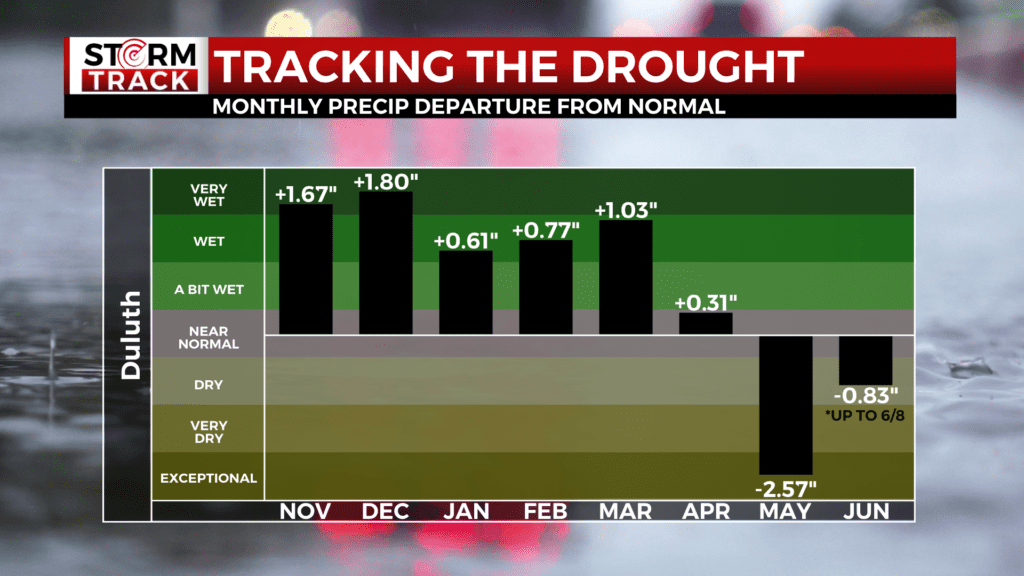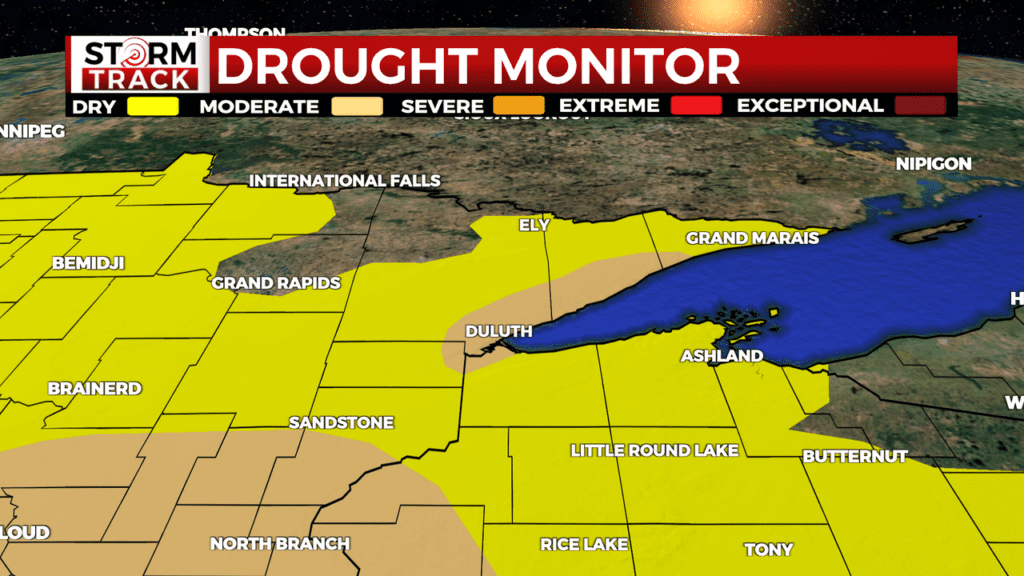Current drought would be worse if not for wet winter
Starting in November, Duluth had six consecutive months with above normal precipitation. This prolonged wet stretch is the reason the current drought is not worse.

In November, Duluth had 3.63″ of precipitation, much more than the climatological normal of 1.96″. This is a +1.67″ departure from normal.
December was a month for the record books. Due in part to the “Blue Blizzard“, 2022 had the snowiest December on record with 44.9″ of snow. This was a liquid equivalent of 3.27″ of precipitation, again significantly more than the climatological normal. With a normal monthly precipitation of 1.47″, this was +1.80” departure from normal.
January had 1.56″ of precipitation, which is a +0.61″ departure from the climatological normal of 0.95″. February was similar, with 1.78″ of precipitation and a +0.77″ departure from the climatological normal of 1.01″.
March was the last month of our prolonged wet stretch. It had 2.49″ of precipitation, which is a +1.03″ departure from the monthly normal of 1.46″.
The trend started to change in April, which was near normal with a departure of +0.31″. April is usually one of our wetter months, with a climatological normal precipitation of 2.53″. This made the 2023 April precipitation of 2.84″ less drastic.
May was drastically drier than normal, with a departure of -2.57″. The climatological normal precipitation for May is 3.37″, but Duluth only had 0.8″.
So far in June, dry weather has continued. As of June 7, the departure from normal is -0.83″. Duluth has only had 0.04″ of precipitation so far this month, lower than the normal amount of 0.87.

According to the U.S. Drought Monitor, which is updated on Thursday mornings, most of the Northland is in D-0, or abnormally dry conditions. As of June 8, Duluth and areas along the North Shore as well as portions of Pine and Burnett Counties are now in D-1 moderate drought.
The U.S. Drought Monitor is produced through a partnership between the National Drought Mitigation Center at the University of Nebraska-Lincoln, the United States Department of Agriculture and the National Oceanic and Atmospheric Administration.
Dry conditions are expected to continue for at least a couple of weeks. The latest forecast can be found at WDIO.com/weather.